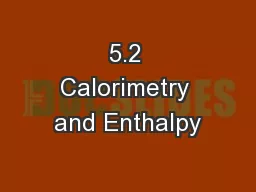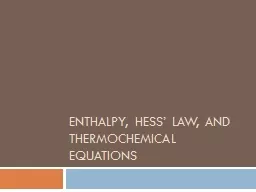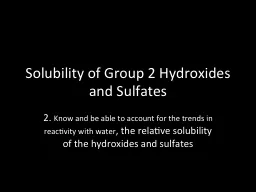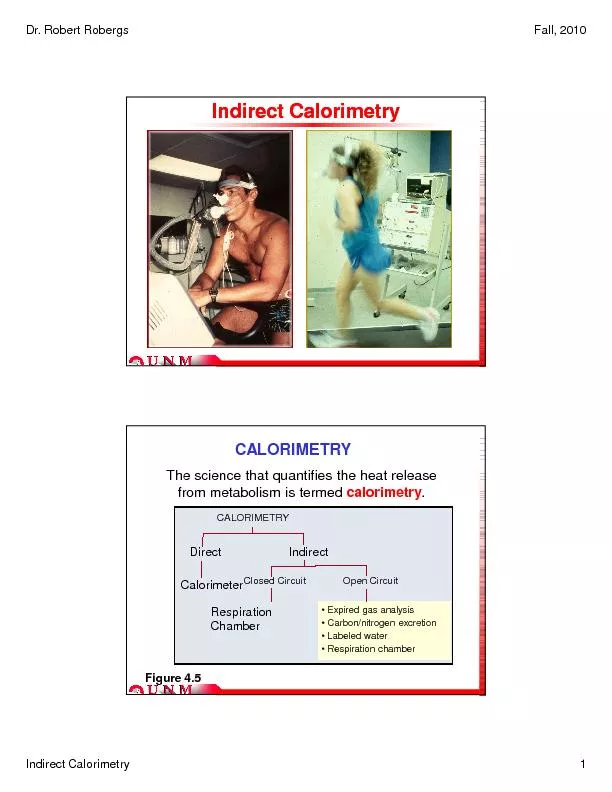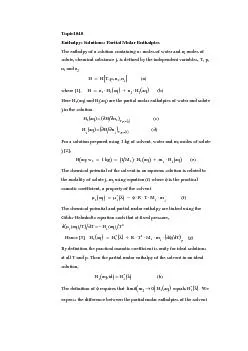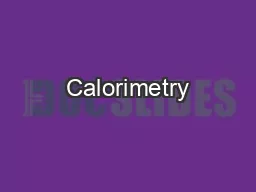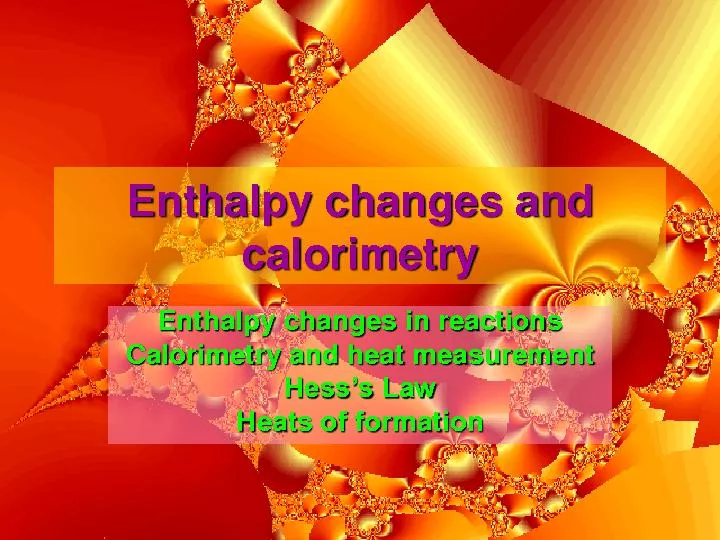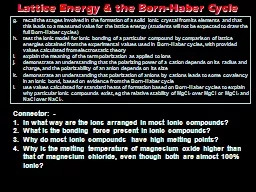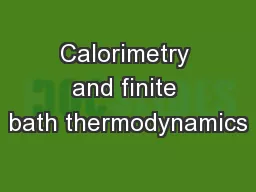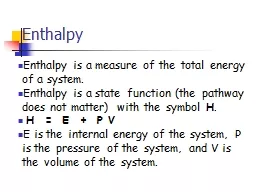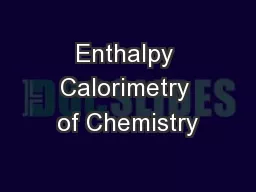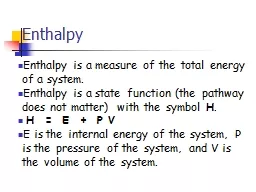PPT-5.2 Calorimetry and Enthalpy
Author : tatyana-admore | Published Date : 2017-09-27
Heat Capacity Specific Heat Capacity c the quantity of thermal energy required to raise the temperature of 1 g of a substance by 1C Units are in JgC Heat Capacity
Presentation Embed Code
Download Presentation
Download Presentation The PPT/PDF document "5.2 Calorimetry and Enthalpy" is the property of its rightful owner. Permission is granted to download and print the materials on this website for personal, non-commercial use only, and to display it on your personal computer provided you do not modify the materials and that you retain all copyright notices contained in the materials. By downloading content from our website, you accept the terms of this agreement.
5.2 Calorimetry and Enthalpy: Transcript
Download Rules Of Document
"5.2 Calorimetry and Enthalpy"The content belongs to its owner. You may download and print it for personal use, without modification, and keep all copyright notices. By downloading, you agree to these terms.
Related Documents

